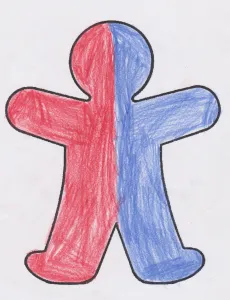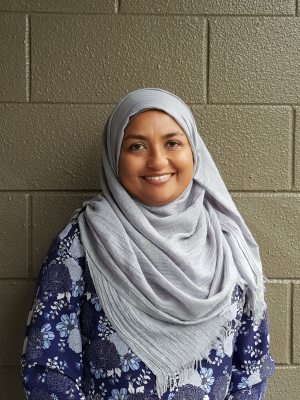Using Language Portraits to Explore Students’ Identities
Lily was born and raised in New Zealand and described herself as a Kiwi with Chinese heritage whose dominant language was English. She was proud of her Chinese background but did not use Mandarin for purposes beyond everyday conversation with her family. Her grandparents, based in China, described Lily as a “foreigner” because her proficiency in Mandarin and her understanding of Chinese culture did not meet their expectations. However, at school, Lily’s teacher regarded her as Chinese and as an English learner because she spoke a language other than English at home.
Lily’s example illustrates the complex nature of identities and how conflicts occur between our self-attributed and other-ascribed identities.
Of course, language is just one aspect of our identities, but even within that one aspect, we may have multiple identities. In Lily’s case, she is at times an English speaker, and at times a Mandarin speaker. Our identities are not static, but continue to evolve based on the context, who we interact with, and our relationship with them.
Our Relationship to Language
Through our interaction with others, we negotiate and co-construct our identities. This means that identity is not something we are, but that it is something we do. Identity is a performative process where we portray ourselves in certain ways in certain contexts, and we shift to different identities as the context changes. Language plays an essential role in identity negotiation. According to Norton, language is not just a linguistic system, but a social practice; Weedon says it is the place where our sense of self is constructed. As we acquire language, we assume relationships between ourselves, the language, and the community of its speakers.
Block claims that we have three types of relationships with language:
- Language expertise. Expertise refers to proficiency in a language that is welcomed by other language users. Sometimes we might not see ourselves as experts, but are perceived by others as experts in the language.
- Language affiliation. Affiliation relates to the individual’s affective attitude toward a language which is used as a result of feelings attached to a particular form of communication.
- Language inheritance. Inheritance is connected with one’s background, such as the family or community setting that uses a particular language.
Expertise, affiliation, and inheritance of a language are not interdependent. The fact of being born to a place does not go hand in hand with one’s expertise in a language or positive affiliation, as we see from Lily’s example, above. She positively affiliated with both her language communities but was not always seen as belonging to those communities by those who claimed membership in them. Lily inherited Mandarin from her family but was not seen to have expertise in it. This is sadly far too often the case for many immigrant children.
Language can be both a source of unity and division. When we decide the boundaries of language communities, we are essentially deciding who belongs within the boundary and who will be left outside. Randolph, Selvi, and Yazan explain that some language speakers are excluded by privileging so-called “native speakers” over others or privileging standardized varieties over others (Rudolph, et al., 2020).
So, as educators, how can we explore and embrace our learners’ language identities? I propose one arts-based activity to try: getting learners to create language portraits. I used language portraits in a study with young children aged between 5 and 10 years in English-medium schools in the Maldives. This is an activity that could be used with learners of all ages and language levels.
Using Language Portraits in Class
Provide each student with a sheet of paper with an outline of a person and a selection of colouring pencils and crayons. Ask them to first list how many languages they speak, and then what those languages are. For each language they identify, then have them select a colour. Students then use their selected colours to colour in the outline and create a portrait of their language self. They decide for themselves how they want to colour these in, and if they want to add any writing to the portrait, they may do this as well. When their portraits are completed, they then explain what the colours represent and why they chose to create the portraits in that particular way.
Even with young learners, this activity reveals a lot about students’ language affiliations and linguistic selves, whether these are real or imagined. Here are three examples from my study, along with the students’ remarks:

I got 85 marks for my English test and 85 marks also in my Dhivehi test last term. So I can say I know two languages very well.
–Milo, Grade 5

My language is Dhivehi. I use it for most things. That’s why I have coloured mostly Dhivehi. But when I am in school, I have to think and write in English. So I have coloured part of my head red and one hand also red.
–Iba, Grade 3

I have coloured English black because I don’t like black. I don’t like English. It makes me feel stupid. I don’t like learning English. It makes me feel bad. I have used blue for Dhivehi. That is my language and I like the colour blue.
–Zaid, Grade 2
As you can see from the examples, language portraits can highlight different relations students have with language and language communities. Some of these may be positive and some may be negative. As teachers, we can use these portraits to then extend the conversation and further explore how we can embrace their identities, and help to make them find better connections with their languages.

